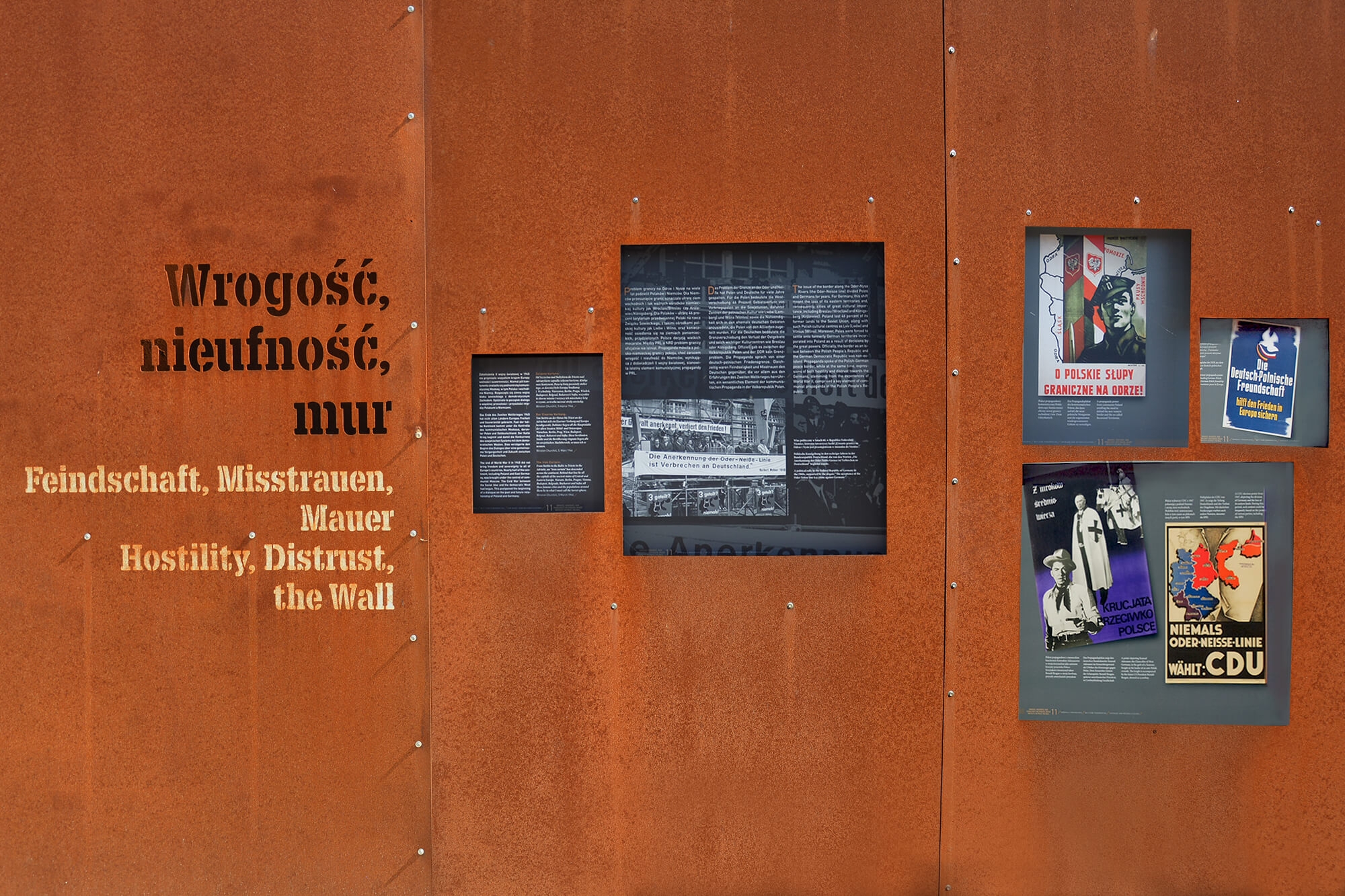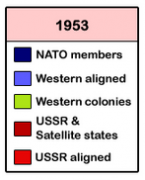Courage and
reconciliation
-
The Cold War and the division of Europe
During the Second World War, the Soviet Union and the USA had fought together against Germany. After the end of the war the opposition of the two great states with different economic and social orders came to the fore. This led to the division of practically the whole world into two blocks, and was connected with the beginning of a Cold War, which lasted until 1989. The allocation of the states of Europe to the "West" or "East" led to a division of the whole continent. The Federal Republic of Germany belonged to the West, but the German Democratic Republic and Poland to the East. Because of the tightly closed borders between the two blocks (the "Iron Curtain"), the daily exchange between the societies of the three countries was blocked for many years. The difficult confrontation with the then recent common past became more complicated because of systemic and political differences.

-
The dispute over the Oder-Neisse border
After the shift of the Polish borders to the West there was a new border between Poland and Germany along the rivers Oder and Neisse. Immediately after the end of the war all parties in the four occupation zones were opposed to this new border. After the founding of the GDR, its authorities supported the new border with their "Communist Brotherland" Poland. In the Federal Republic of Germany, the attitude to the new border changed only in the late 1960s. Instead of a policy of strength, there should now be a "change through rapprochement". Part of the new policy was the acknowledgement of the Polish western border. The inviolability of the border was laid down in 1970 in a treaty concluded between Poland and the Federal Republic of Germany. This step towards a formal recognition of the new border was rejected by the CDU (Christian Democratic Union) and CSU (Christian Social Union). In the domestic political debate, these two parties took advantage of quotations from prominent SPD (Social Democratic Party) politicians from the 1950s, when they still vehemently rejected the new border. One such example is the picture of the chairman of the CSU Franz Josef Strauss with a quotation from the SPD politician Herbert Werner.
-
The Relations between Poland and the two German states
During the Cold War, Poland and the Federal Republic of Germany belonged to different alliances directed against each other. This structural opposition was intensified by powerful narratives, according to which the “the Poles” were responsible for the flight and expulsion of the Germans and “the West Germans” were thought of as revisionists waiting only for an opportunity to take possession of the territories of Northern and Western Poland. In addition to the technical difficulties of travel (necessary were invitation and visa), this concept of an enemy complicated the encounters of West Germans and Poles. The GDR belonged to the same power bloc as Poland, but the concept of the "brother states" was not supported by a broad social basis. Until 1972, there were also visa requirements between these two states. In response to the founding of Solidarność, the GDR reintroduced the visa requirement after only eight years in 1980.




